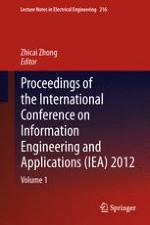2013 | OriginalPaper | Buchkapitel
79. Decreasing Accelerated Gradient Descent Method for Nonnegative Matrix Factorization
verfasst von : Furui Liu
Erschienen in: Proceedings of the International Conference on Information Engineering and Applications (IEA) 2012
Verlag: Springer London
Aktivieren Sie unsere intelligente Suche, um passende Fachinhalte oder Patente zu finden.
Wählen Sie Textabschnitte aus um mit Künstlicher Intelligenz passenden Patente zu finden. powered by
Markieren Sie Textabschnitte, um KI-gestützt weitere passende Inhalte zu finden. powered by
